Charles E W Bean, Diaries, AWM38 3DRL 606/38A/1 - 1915 - Part 5
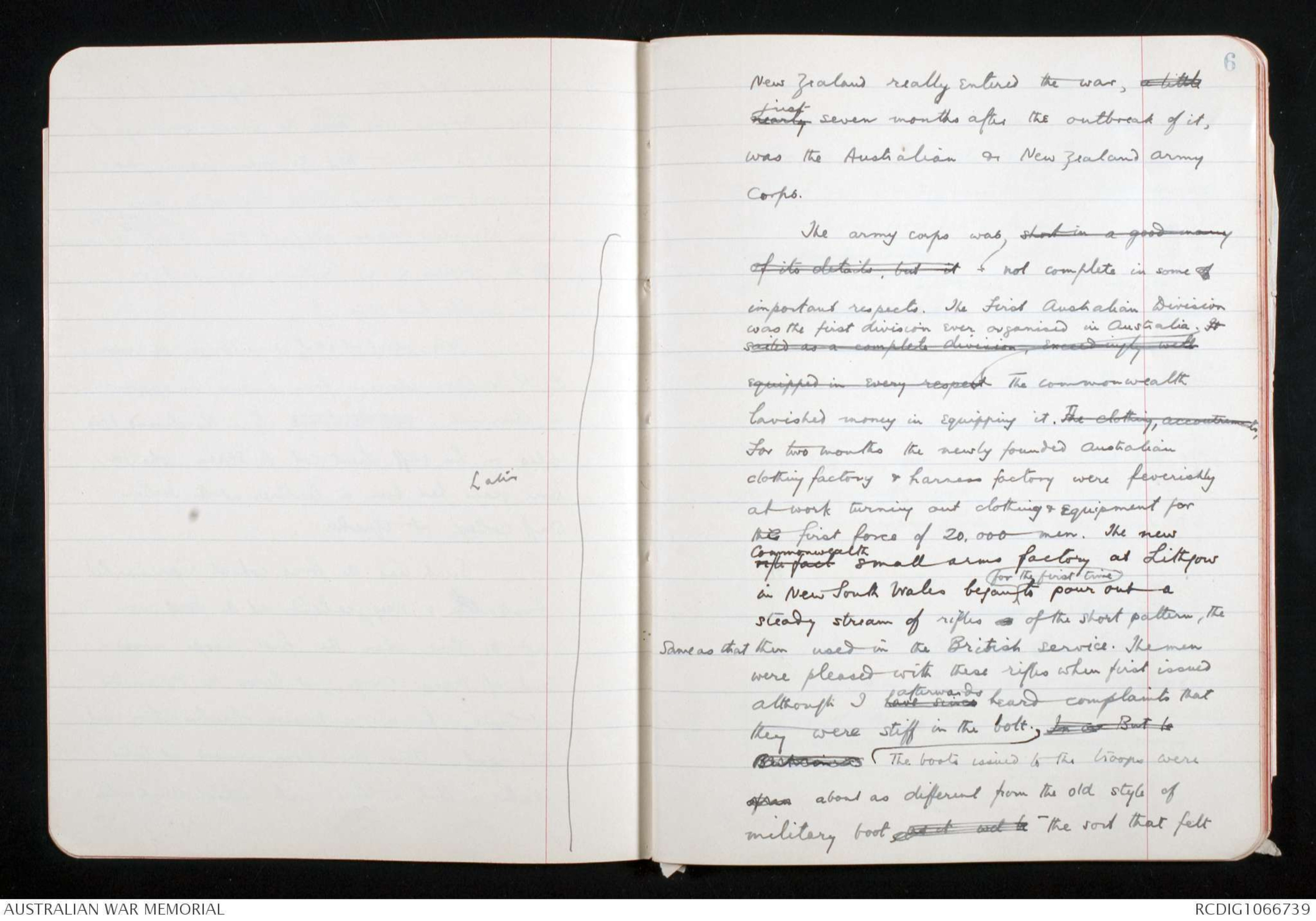
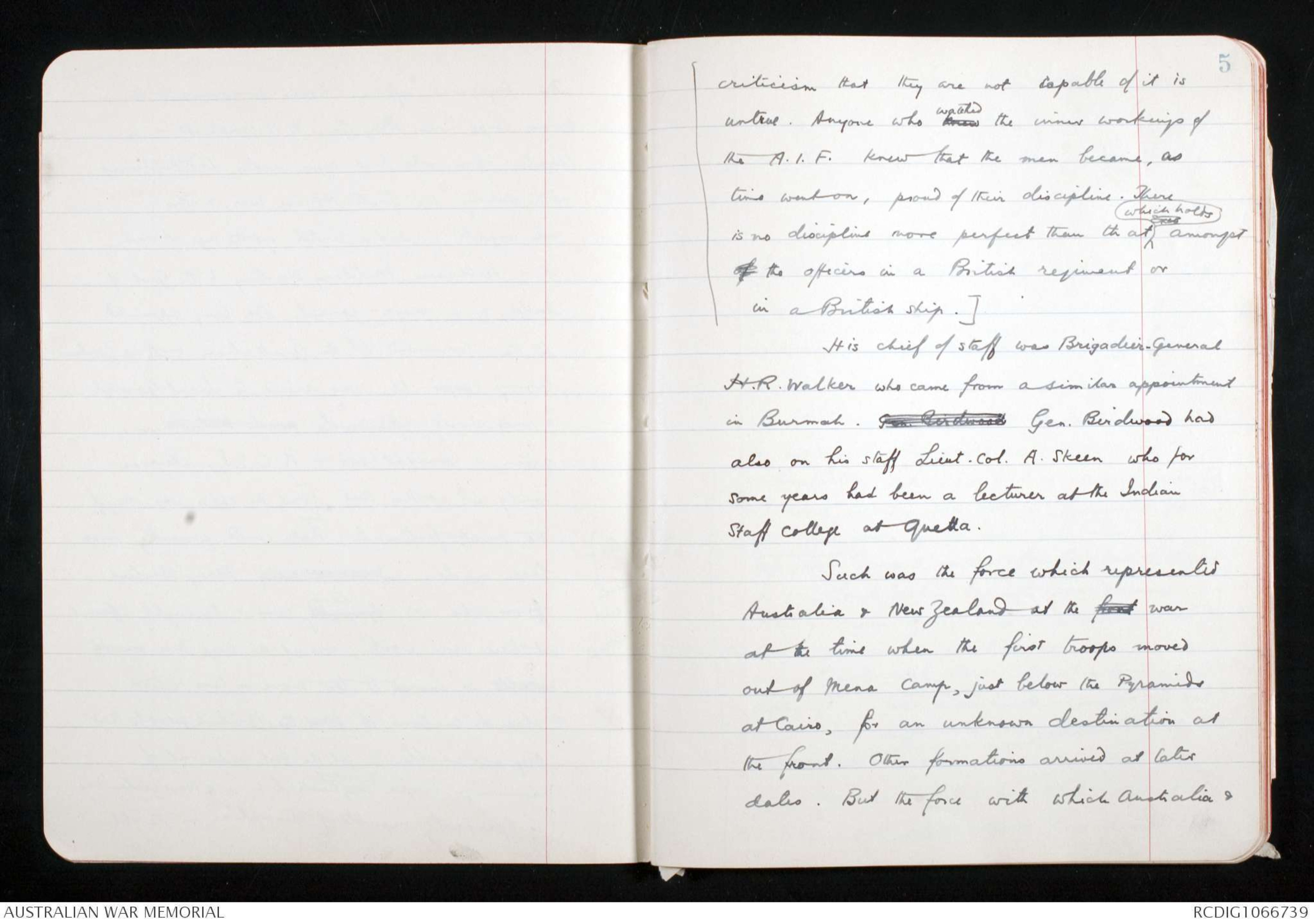
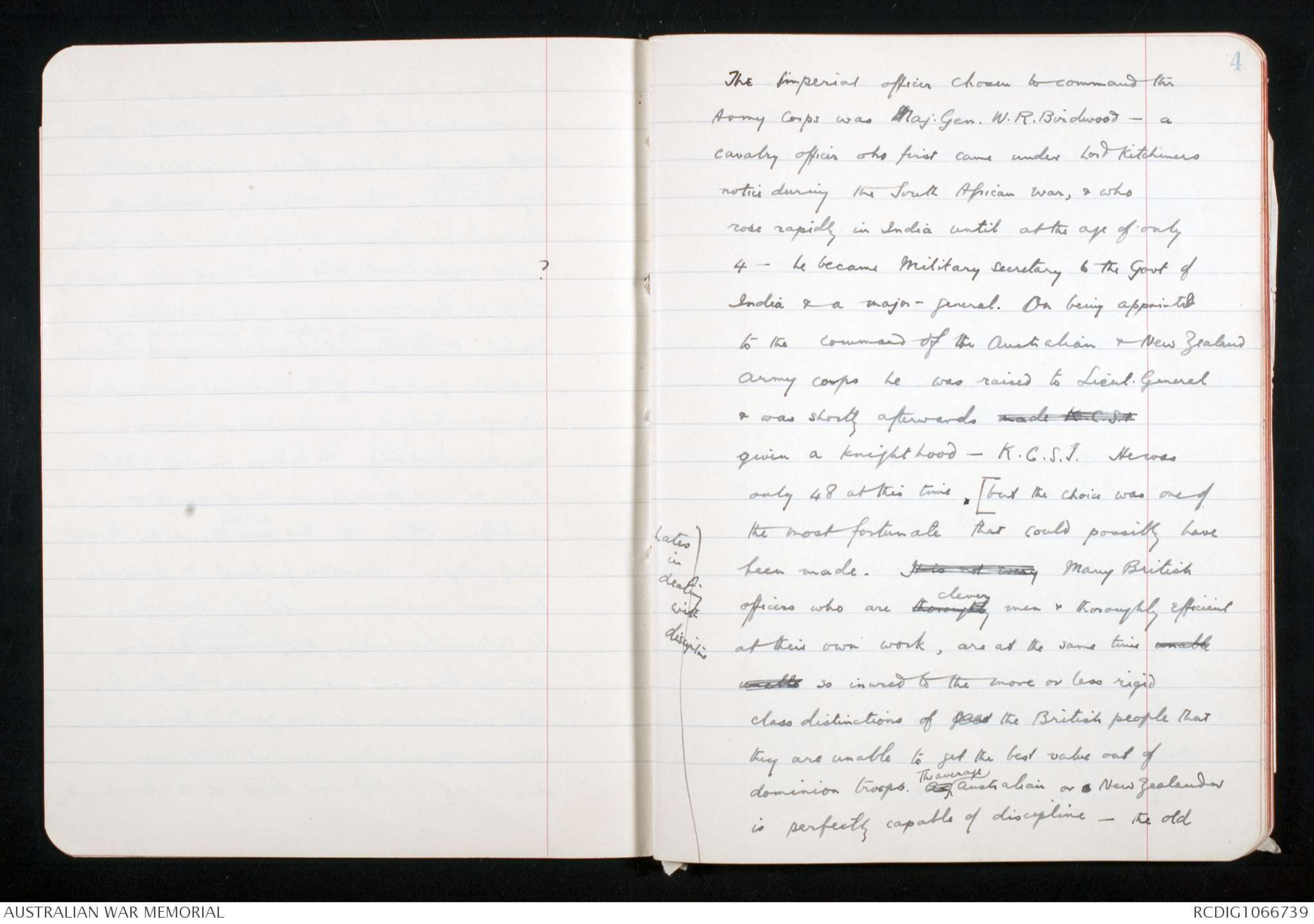
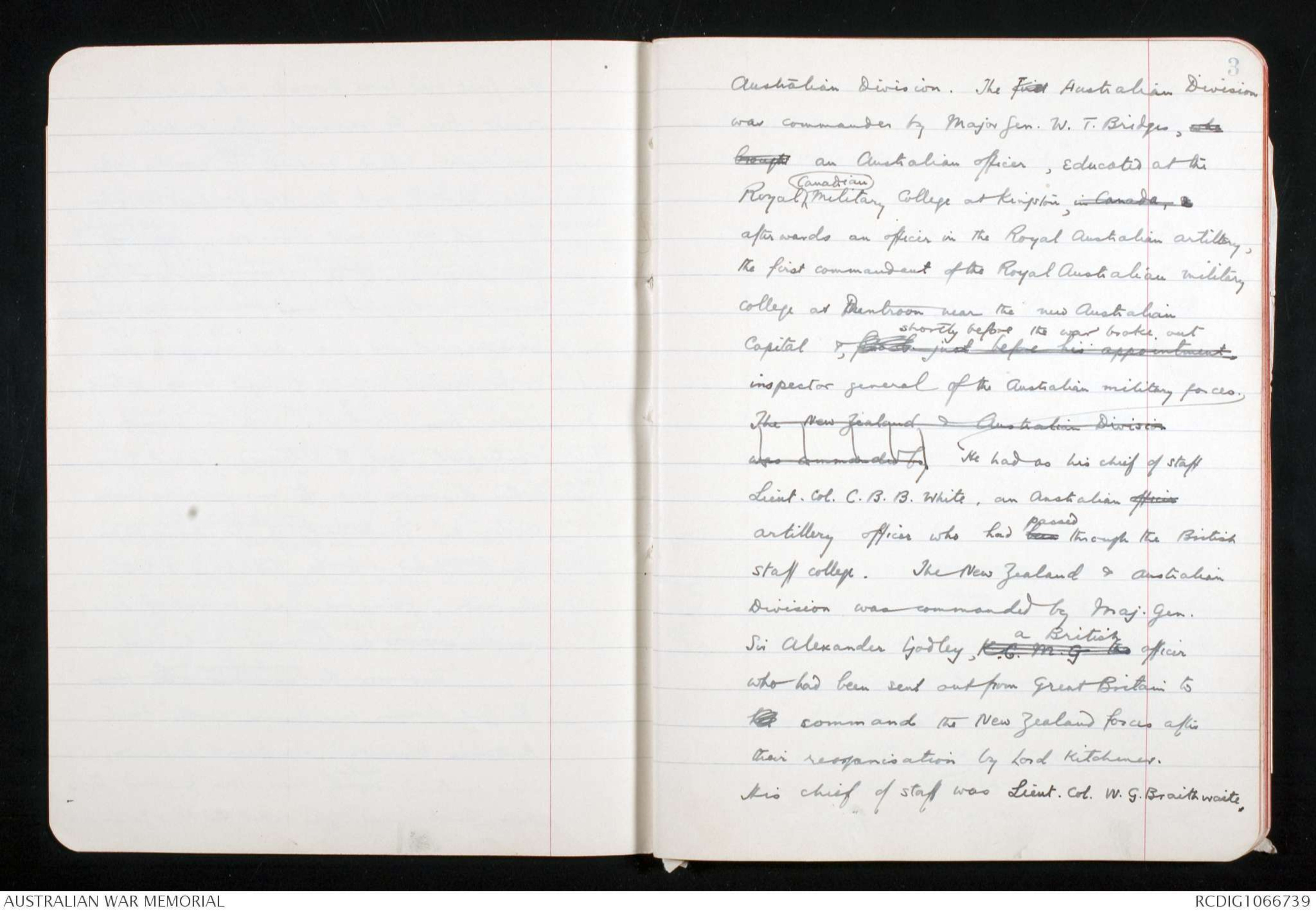
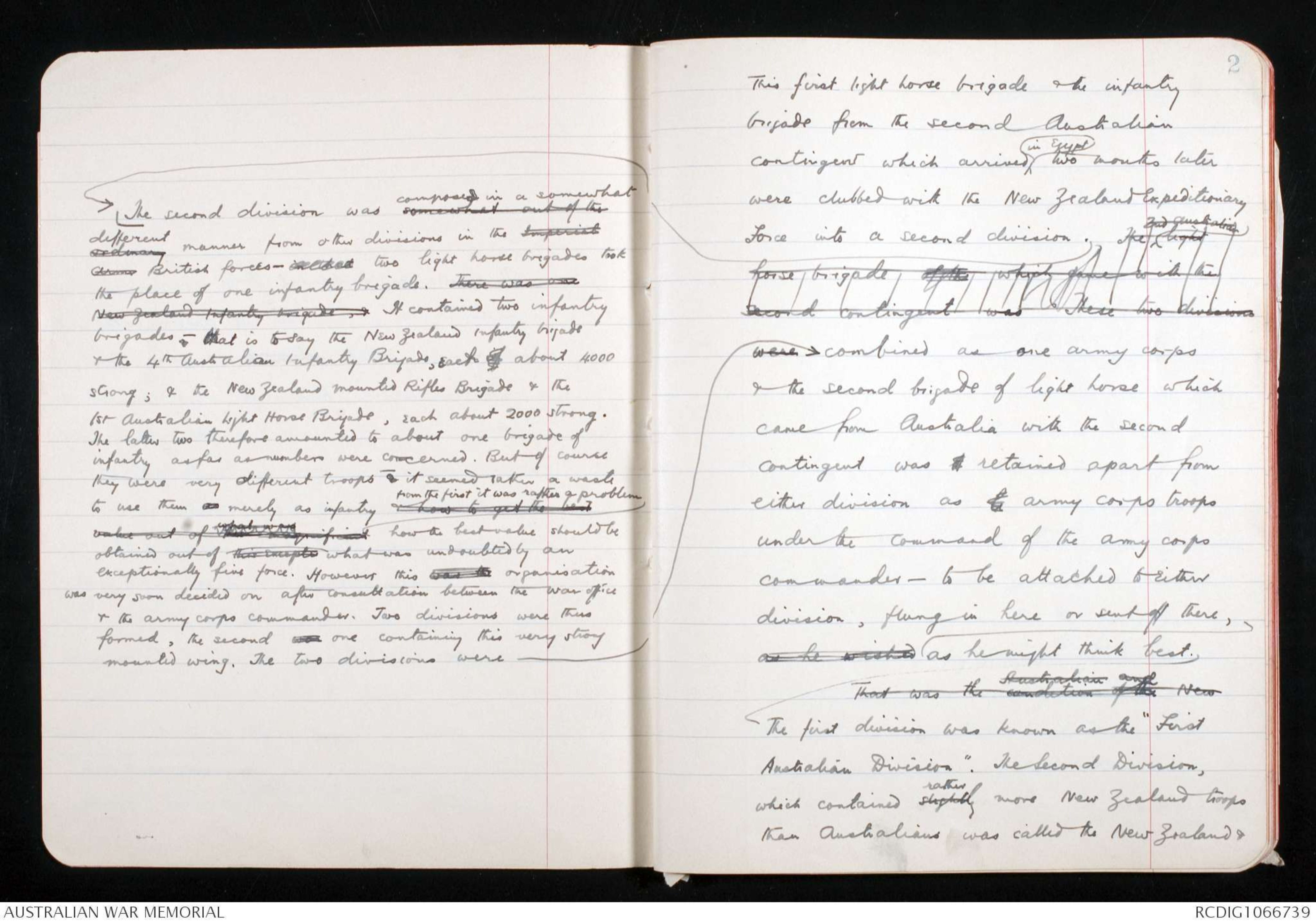
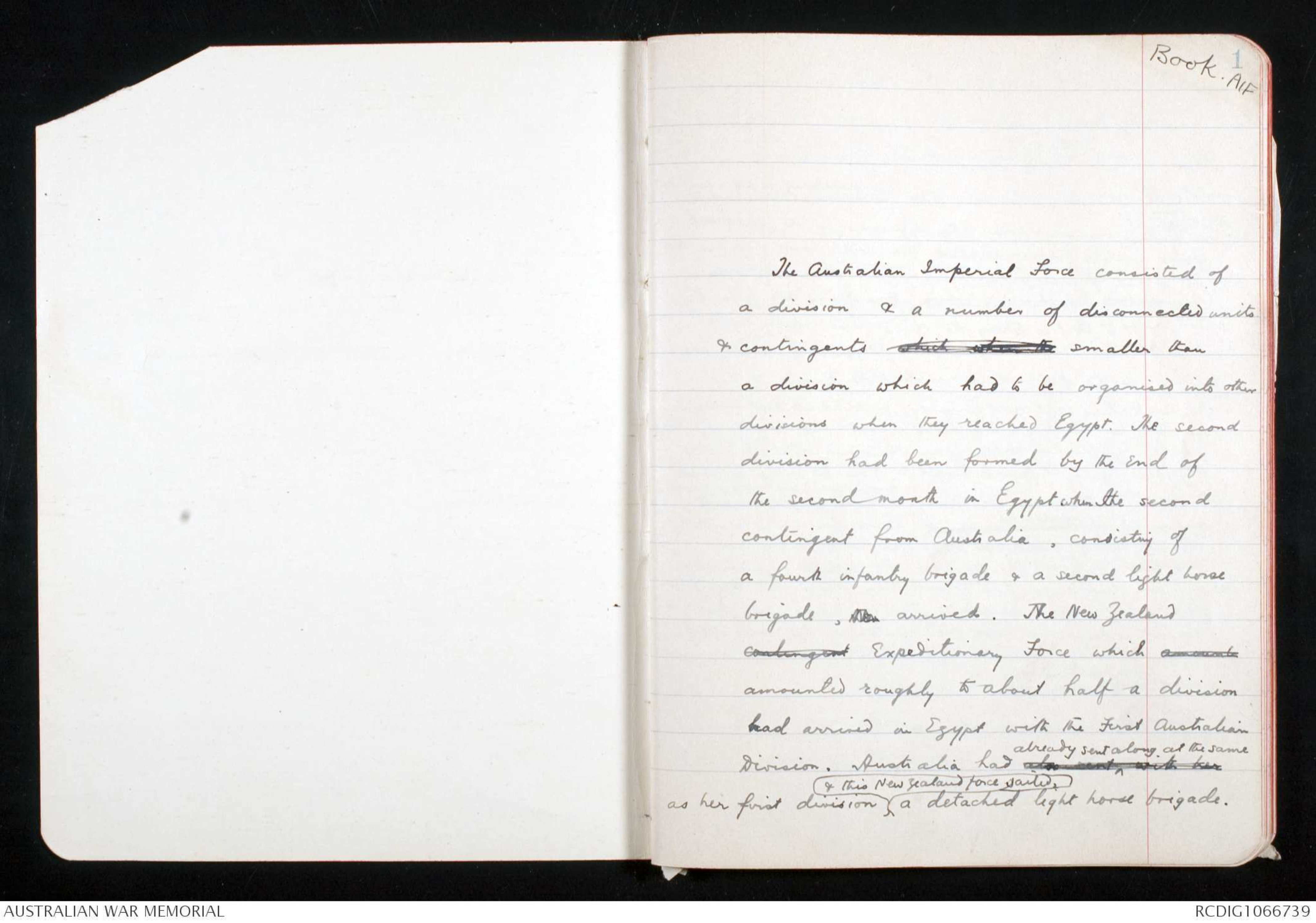
Later
6
New Zealand really entered the war, a littlenearly just seven months after the outbreak of it,
was the Australian & New Zealand Army
Corps.
The army corps was short in a good manyof its details but it & not complete in some of
important aspects. The First Australian Division
was the first division ever organised in Australia. Itsailed as a complete division, exceedingly wellequipped in every respect. The Commonwealth
lavished money in equipping it. The clothing, accoutrements,
For two months the newly founded Australian
clothing factory & harness factory were feverishly
at work turning out clothing & equipment for
the first force of 20,000 men. The newrifle fact Commonwealth small arms factory at Lithgow
in New South Wales began ^for the first time to pour out a
steady stream of rifles on of the short pattern, the
same as that then used in the British service. The men
were pleased with these rifles when first issued
although I have since afterwards heard complaints that
they were stiff in the bolt. In one But lessssssss The boots issued to the troops wereoften about as different from the old style of
military boot, as it wd be - the sort that felt
5
criticism that they are not capable of it is
untrue. Anyone who knew watched the inner workings of
the A.I.F. knew that the men became, as
time went on, proud of their discipline. There
is no discipline more perfect than that ^which holds exas amongstof the officers in a British regiment or
in a British ship.]
His chief of staff was Brigadier-General
H.R. Walker who came from a similar appointment
in Burmah. Gen. Birdwood Gen. Birdwood had
also on his staff Lieut. Col. A. Skeen who for
some years had been a lecturer at the Indian
Staff College at Quetta.
Such was the force which represented
Australia & New Zealand at the front war
at the time when the first troops moved
out of Mena Camp, just below the Pyramids
at Cairo, for an unknown destination at
the front. Other formations arrived at later
dates. But the force which Australia &
4
The Imperial officer chosen to command the
Army Corps was Maj. Gen. W. R. Birdwood - a
cavalry officer who first came under Lord Kitcheners
notice during the South African war, & who
rose rapidly in India until at the age of only
4- he became Military Secretary to the Govt of
India & a major-general. On being appointed
to the command of the Australian & New Zealand
Army Corps he was raised to Lieut. General
& was shortly afterwards made K.C.S.I
given a knighthood - K.C.S.I. He was
only 48 at this time. [but the choice was one of
the most fortunate that could possibly have
been made. It is not every Many British
officers who are thoroughly clever men & thoroughly efficient
at their own work, are at the same time unableunable so inured to the more or less rigid
class distinctions of past the British people that
they are unable to get the best value out of
dominion troops. Any ^The average Australian or a New Zealander
is perfectly capable of discipline - the old
[*Later in dealing with discipline*]
3
Australian Division. The first Australian Division
was commanded by Major Gen. W. T. Bridges, whobrought an Australian officer, educated at the
Royal ^Canadian Military College at Kingston, in Canada &
afterwards an officer in the Royal Australian Artillery,
the first commandant of the Royal Australian Military
College at Duntroon near the new Australian
capital &, probl just before his appointment shortly before the war broke out
inspector general of the Australian military forces.The New Zealand & Australian Divisionwas commanded by He had as his chief of staff
Lieut. Col. C. B. B. White, an Australian officer
artillery officer who had been passed through the British
staff college. The New Zealand & Australian
Division was commanded by Maj. Gen.
Sir Alexander Godley, K.G.M.G. the a British officer
who had been sent out from Great Britain tohd command the New Zealand forces after
their reorganisation by Lord Kitchener.
His chief of staff was Lieut. Col. W.G. Braithwaite,
The second division was somewhat out of the composed in a somewhat ordinary different manner from other divisions in the ImperialArmy British forces - in that two light horse brigades took
the place of one infantry brigade. There was one New Zealand infantry brigade, & It contained two infantry
brigades - that is to say the New Zealand Infantry brigade
& the 4th Australian Infantry Brigade, each of about 4000
strong; & the New Zealand Mounted Rifle Brigade & the
1st Australian Light Horse Brigade, each about 2000 strong.
The latter two therefore amounted to about one brigade of
infantry as far as numbers were concerned. But of course
they were very different troops - it seemed rather a waste
to use them as merely as infantry & how to get the best from the first it was rather a problem out of that significant what was how the best value should be
obtained out of their excepti what was undoubtedly an
exceptionally fine force. However this was the organisation
was very soon decided on after consultation between the war office
& the army corps commander. Two divisions were thus
formed, the second was one containing this very strong
mounted wing. The two divisions were →
2
This first light horse brigade & the infantry
brigade from the second Australian
contingent which arrived ^in Egypt two months later
were clubbed with the New Zealand Expeditionary
Force into a second division. The 2nd Australian lighthorse brigade of the which came with the second contingent was These two divisionswere ⇢ combined as one army corps
& the second brigade of light horse which
came from Australia with the second
contingent was th retained apart from
either division as th army corps troops
under the command of the army corps
commander - to be attached to either
division, flung in here or sent off there,as he wished as he might think best.That was the condition of the Australian and New
The first division was known as the "First
Australian Division." The Second Division,
which contained slightly rather more New Zealand troops
than Australians was called the New Zealand &
1
Book A.I.F.
The Australian Imperial Force consisted of
a division & a number of disconnected units
and contingents which when the smaller than
a division which had to be organised into other
divisions when they reached Egypt. The second
division had been formed by the end of
the second month in Egypt when the second
contingent from Australia, consisting of
a fourth infantry brigade & a second light horse
brigade, also arrived. The New Zealandcontingent Expeditionary Force which amounted
amounted roughly to about half a division
had arrived in Egypt with the First Australian
Division. Australia had also sent with her ^already sent along at the same
as her first division ^& this New Zealand force sailed, a detached light horse brigade.
 Deb Parkinson
Deb ParkinsonThis transcription item is now locked to you for editing. To release the lock either Save your changes or Cancel.
This lock will be automatically released after 60 minutes of inactivity.